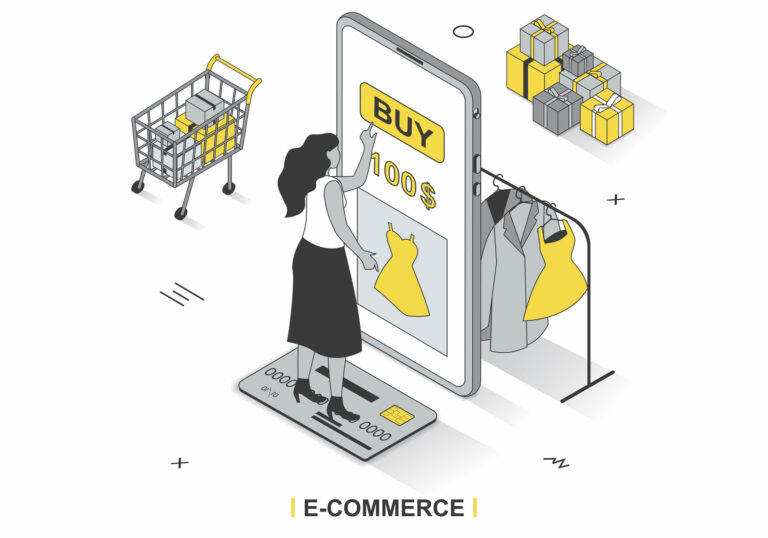With e-commerce, businesses are constantly seeking innovative ways to increase their sales and conversions. Among the various strategies employed, e-commerce popups have emerged as a powerful tool for engaging website visitors and driving revenue growth.
This post will explore how successful companies effectively use e-commerce popups to enhance their online sales. Understanding their strategies allows you to adapt and implement these techniques to optimize your online business.
Targeted and Timely E-Commerce Popups
Leading e-commerce companies recognize the importance of displaying popups at the right time and to the right audience. Generic, intrusive popups can annoy visitors, leading them to exit the website prematurely. However, by maximizing user behavior and analytics, companies can create targeted popups that offer relevant information or incentives.
For instance, when visitors add items to their shopping cart but abandon the site without completing the purchase, a well-timed popup can offer a discount code or free shipping to entice them to return and complete the transaction. This personalized approach ensures that popups provide value to the visitor and increase the likelihood of conversion.
Exit Intent Popups
Exit intent popups are an effective technique employed by top e-commerce companies to retain visitors who are about to leave their websites. By tracking mouse movement, scrolling behavior, and the cursor’s position, businesses can detect when a visitor will likely exit and trigger a popup accordingly.
Exit intent popups can offer incentives such as limited-time discounts, exclusive offers, or free resources to encourage visitors to reconsider leaving. By providing a compelling reason to stay, businesses can capture potential sales that may have otherwise been lost.
Email Capture Popups
Building an email subscriber list is crucial for nurturing customer relationships and driving repeat sales. Prominent e-commerce companies utilize popups strategically to capture email addresses and grow their subscriber base.
Rather than employing intrusive, full-screen popups, use smaller, unobtrusive popups that appear after visitors have engaged with the website for a certain period or have shown interest in specific products. These popups typically offer incentives such as exclusive discounts or early access to promotions in exchange for subscribing to the company’s newsletter.
By effectively implementing email capture popups, businesses can create a direct line of communication with potential customers and foster long-term customer loyalty.
Social Proof Popups
Social proof plays an arguable role in influencing consumer behavior. Many successful e-commerce companies leverage social proof popups to build trust and credibility with website visitors. These popups display real-time notifications of recent purchases, positive reviews, or testimonials.
By showcasing the popularity and satisfaction of other customers, social proof popups instill confidence in potential buyers, leading to increased conversions. Additionally, by including a sense of urgency, such as limited availability or countdown timers, these popups create a fear of missing out (FOMO), further incentivizing visitors to purchase.
Gamified Popups
Gamification is a growing trend in the e-commerce industry, with many top companies incorporating interactive elements into their popups. By adding an element of fun and excitement, businesses can create a memorable experience for visitors while encouraging engagement and sales.
For example, companies may use spin-to-win wheels or scratch-off cards in popups to offer discounts or prizes. This gamified approach captures attention and creates a sense of anticipation and entertainment, making the shopping experience more enjoyable for customers.
Featured Discounts
Popups that showcase discounts are a powerful way to entice visitors to purchase. By offering exclusive deals or limited-time promotions, businesses can create a sense of urgency and motivate customers to take advantage of the savings. Well-designed and strategically placed discount popups can significantly boost conversion rates and increase sales.
Collecting Feedback from Customers
Popups serve as a valuable tool for gathering customer feedback. Use targeted surveys or feedback forms in popups to gather insights into customer preferences, satisfaction levels, and pain points. By understanding the needs and expectations of their target audience, businesses can make informed decisions to improve their products, services, and overall customer experience.
Advertise Best-Selling Products
Use popups to highlight and promote best-selling products or popular categories. By showcasing top-rated items or trending collections, businesses can capture visitors’ attention and generate interest in their offerings. This approach helps customers discover new products and increases the chances of making additional purchases.
Make Product Recommendations
Personalization is a crucial driver of e-commerce sales. Companies can leverage popups to offer tailored product recommendations based on a visitors’ browsing behavior, purchase history, or preferences. By suggesting relevant products, businesses can enhance the customer experience and increase the likelihood of cross-selling or upselling.
Summary
Popups, when implemented strategically, can significantly enhance e-commerce sales for businesses. By studying the techniques employed by top companies, such as those listed in this post, you can optimize your e-commerce strategy for increased sales and reduced cart abandonment.
Remember to balance providing value to visitors and avoiding intrusive tactics. Test different popup designs, messages, and triggers to find what works best with your audience. By effectively leveraging popups’ power, one can increase visitor engagement, boost conversions, and grow your e-commerce business.
Try our free e-commerce web audit here.







